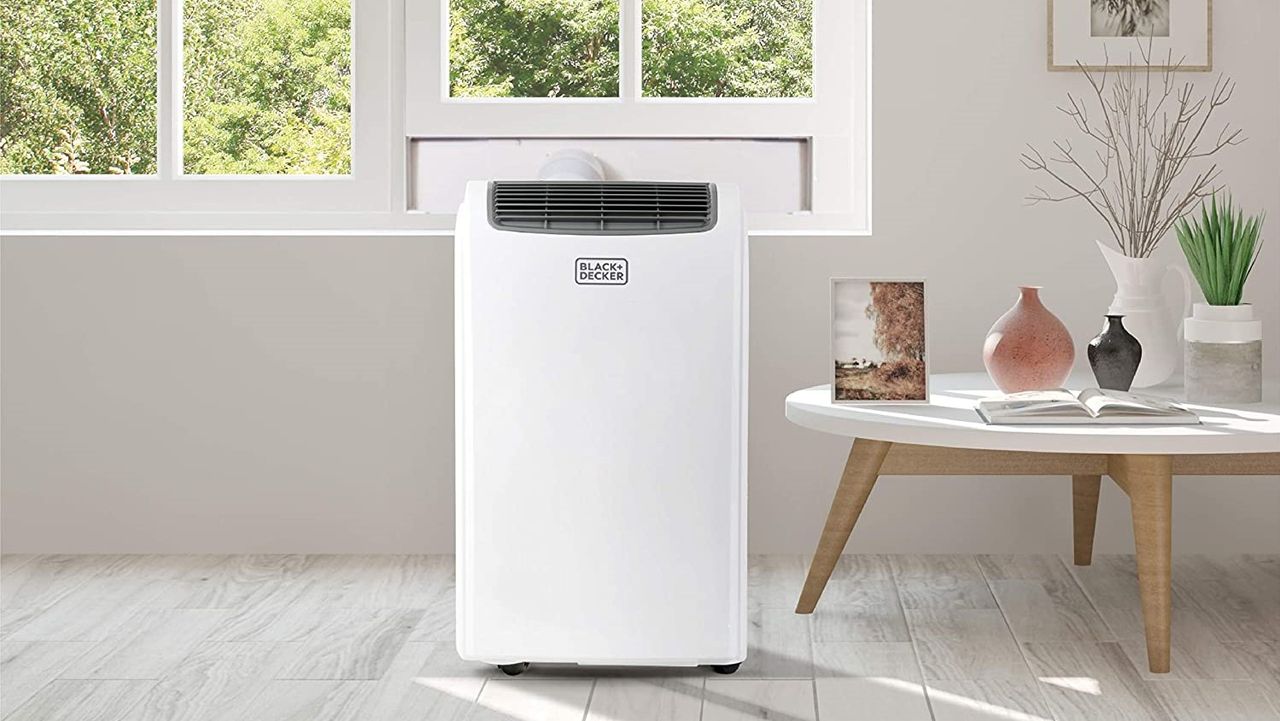

A portable air conditioner is an efficient and effective way to cool down your home, or an individual room, on hot days. Most are easy to place precisely where you need them and direct the airflow to cool down a large area quickly. Here are some of the top models available.
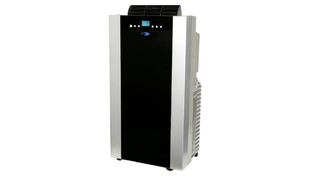
Whynter ARC-14S
Cools large areas quickly
The Whynter air conditioner uses two hoses to cool down areas up to 500 sq. ft. down to 61 degrees Fahrenheit quickly. Temperatures and program settings can be controlled from the digital panel or with the included remote.
Pros:
- Quickly cools
- No collection bucket
- Digital controls and remote
Cons:
- Large and bulky
This Whynter air conditioner is eco-friendly because it's lead-free and uses CFC-free refrigerant. It collects over 100 pints, or 12.5 gallons, of moisture from the air each day and recycles it to both cool your home quicker and eliminate the need to empty a collection bucket. It comes with a storage bag to keep it clean in between uses. This unit is rather large and bulky and can be difficult to move around. It is on caster wheels to help.
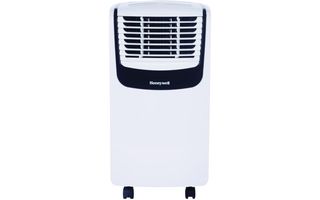
Honeywell MO0CESWK7
Cools and filters
This portable air conditioner filters dust and small particles out of the air as it cools down rooms up to 450 sq. ft. It also works as a dehumidifier making it a good choice for humid areas.
Pros:
- Filters air
- Dehumidifier mode
- Bucket-less design
Cons:
- Drain system needs set up for some functions
The Honeywell ac unit features three fan speeds and a timer that lets you keep control of your home's energy use. You can control the air conditioner with the included remote and wash the dust filter to reuse over and over. The unit will let you know when it's time to change or clean the filter. The built-in dehumidifier will draw up to 86 pints (10.75 gallons) of moisture from the air throughout the day, which helps in the cooling process. There isn't a collection bucket, but you will need to set up the drain system if you use the dehumidifier setting.
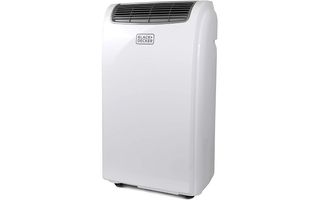
Black+Decker air conditioner
Good choice for dorms and RVs
This air conditioner is small, so it will only cool about 150 sq. ft. This makes it perfect for dorms, apartments, offices, and RVs. It runs quietly, so it won't disturb you while sleeping.
Pros:
- Good for dorms and apartments
- Fan mode
- Built-in dehumidifier
Cons:
- Strugglers in large spaces
The remote control and digital display panels let you set the temperatures down to 65 degrees Fahrenheit, and set a time up to 24 hours. The hose is small - under 5ft - but it comes with the adapter you need to attach to a window for optimal use. It can be used as a fan, or dehumidifier, too.
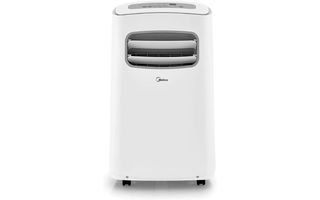
Midea smart air conditioner
"Alexa, turn on the ac"
This Midea air conditioner is ready to connect to your smart home device and is compatible with both Amazon Echo and Google Assistant.
Pros:
- Connect to Alexa or Google Assistant
- Filters pet hair
Cons:
- Adhesive sticks to windows
It can be used as a dehumidifier or as a floor fan, too. It cools down to 62 degrees Fahrenheit and has a 24-hour timer you can set. The filter will snatch dust and pet hair out of the air as it cools, and the filter is washable and reusable. The hose is mounted to the window using the included kit and foam adhesive. The adhesive does tend to stick to the window once the unit is removed and needs a special removal technique in order to avoid damage to your window.
Our recommendations
The Whynter ARC-14SH is the best and most flexible option because it is efficient enough to cool down most areas, including a studio apartment. It works in both humid and arid environments and will recycle moisture pulled from the air to help cool the air circulating through it. This means there isn't a collection bucket that needs to be emptied. You can set the thermostat down to 61 degrees Fahrenheit, but this unit can also be used as a heater. Settings can be controlled from the digital panel on the air conditioner or with the included remote control. The Whynter ARC-14SH is pretty big, weighing 80 pounds, and has a high price tag. But the amount of flexibility and the efficiency of its cooling, and heating, capabilities are worth the cost.
For a more budget-friendly option, check out the Honeywell MO0CESWK7. It works similarly to the Whynter ARC-14SH, including using a bucketless design. It filters the air and can be used as a dehumidifier, too. it only has a single hose instead of two, like the Whynter model, but still does a decent job cooling up to 450 sq. ft. of space.
Stay cool while making a choice
When looking to buy a portable air conditioning unit, there are some key considerations you need to make, as well as some jargon you need to get to grips with. Here's what you need to look for before you buy a portable AC unit.
Before choosing a portable air conditioner, get an idea of how big the room is and where the unit will be placed. The average size of a living room is 216 square feet while a bedroom is about 132 square feet and a kitchen is between 240 and 360 square feet. Knowing this will eliminate several air conditioning models based on their inability to cool your home.
BTU stands for British Thermal Unit and is basically a means to measure heat. Air conditioners use BTU to measure how much heat an air conditioning unit can add or remove from a room in the space of an hour. The higher the BTU rating, the quicker the unit will remove the warm air.
Hose length is an important consideration before buying a portable air conditioner. All portable air conditioners need to be vented outside through a window. If you have furniture in front of the window, a longer hose is needed to be able to vent heated air outside.
Look at the space you have available and where you want to place your portable AC unit. Measure this distance to make sure the hose is long enough. We would recommend portable AC units with a hose length of 5 feet or more for maximum flexibility.
Remember, portable AC units are noisy. They use motorized fans and compressors that create a flow of air. If you are looking for a quieter unit for the bedroom or something that you can hear the television over, we recommend you check the decibel levels before buying.
Why trust us?
At Real Homes, we recommend the best products to enhance your life. As experts, we handpick products based on quality and usefulness to positively impact your life. We take our responsibility seriously — testing products, reading reviews, and sourcing knowledgeable outlets to ensure our selections are worthy of your time and money. Our detailed product overviews balance objective information with subjective opinions, so making the best choice for your home and lifestyle is easy.
Join our newsletter
Get small space home decor ideas, celeb inspiration, DIY tips and more, straight to your inbox!

Nikki writes for multiple Future Publishing brands covering topics from antivirus to kitchen appliances to SAS. She has over 15 years of research and writing experience, including eight years of testing and reviewing consumer products. Nikki earned bachelor’s degrees in both English and Political Science with a focus on empirical research. In her spare time, Nikki serves as a member of several school councils and volunteers for a local arts board.
-
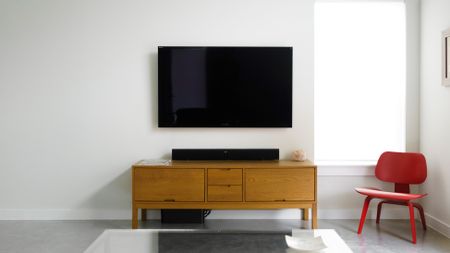 Best TV Wall Mounts
Best TV Wall MountsYou can give your television the lift it deserves with a handy wall mount. TV wall mounts make it simple to elevate your set from your stand or entertainment center. Selecting the right mount can be a difficult process. Thankfully, we have a collection of the best TV wall mounts to get you started.
By Real Homes Staff Published
-
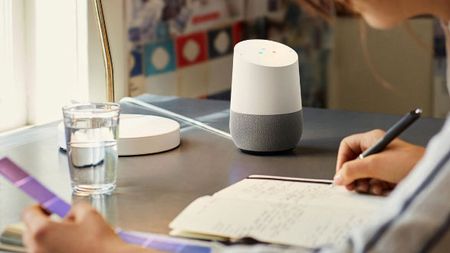 Google Assistant review
Google Assistant reviewRead our Google Assistant review and discover if it's the smart assistant for you...
By James Peckham Published
-
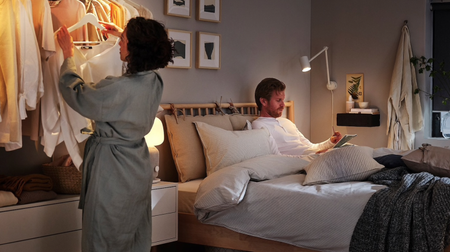 These are the best gu 10 smart bulbs to up your smart lighting game at home
These are the best gu 10 smart bulbs to up your smart lighting game at homeUpgrade your spotlights with our pick of the best gu 10 smart bulbs – they're super handy and will transform your lighting scheme
By Emily Shaw Published
-
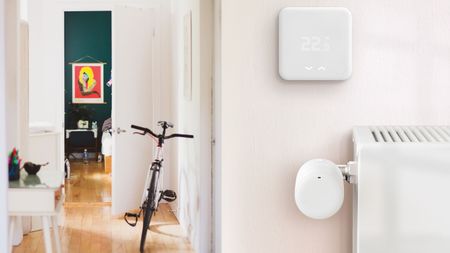 Tado Smart Thermostat research reveals the North/South divide when it comes to turning on the heating
Tado Smart Thermostat research reveals the North/South divide when it comes to turning on the heatingTado Smart Thermostats monitor energy usage – which provides interesting insights into when Northerners turn on their heating, compared with Southerners
By Emily Shaw Published
-
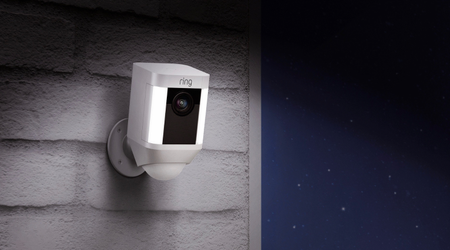 Ring Spotlight Cam review
Ring Spotlight Cam reviewThe Ring Spotlight Cam is the market-leading security camera with built-in combination light
By Jason Orme Last updated
-
 Need smart outdoor security lighting? Ring Smart Lighting – is now less than $100
Need smart outdoor security lighting? Ring Smart Lighting – is now less than $100Brighten up your blindspots and better protect your home from intruders with Ring Smart Lighting
By Emily Shaw Published
-
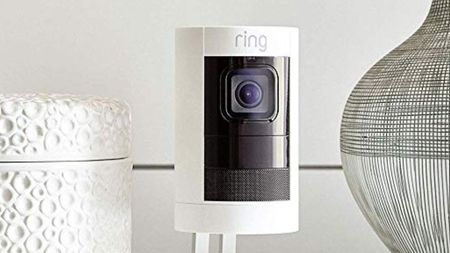 Save £50 on the Ring Stick Up Cam and beef up your home security in seconds
Save £50 on the Ring Stick Up Cam and beef up your home security in secondsOne of our top rated smart security cameras, the Ring Stick Up Camera is currently available with an impressive £50 off
By Emily Shaw Published
-
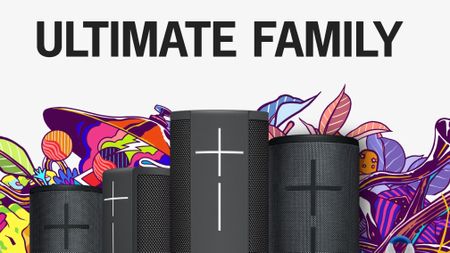 Save 50% on Ultimate Ears portable speakers this bank holiday
Save 50% on Ultimate Ears portable speakers this bank holidayA top of the range portable speaker with a 50% discount? We’re sold on Ultimate Ears
By Emily Shaw Published